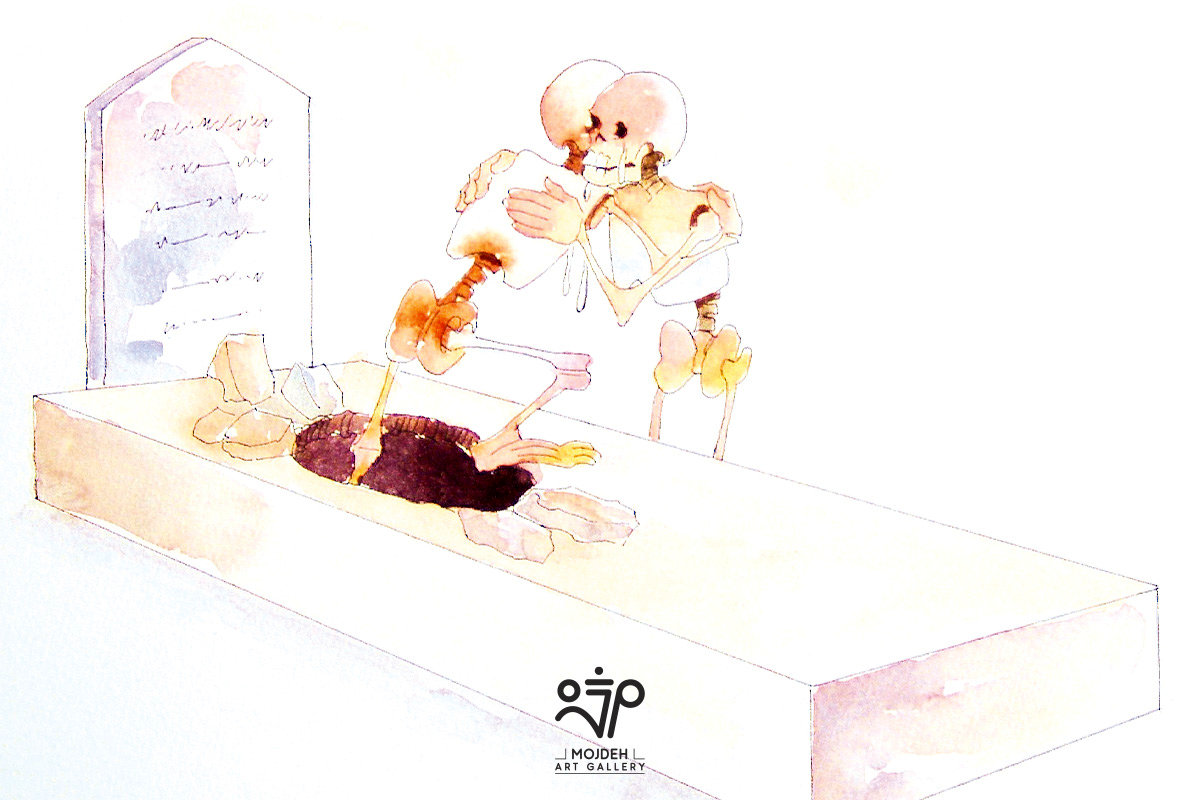Visual Translation of Verbal Humor

Bahman Rezaei is among the first group of Iranian cartoonists and caricaturists. Along with Kambiz Derambakhsh and others, Rezaei is one of the pioneers in this field and was active until quite recently, but his satirical language and visual humor does not seem to have changed much over the years. Humor has a very long history in Iranian literature, be it formal or colloquial. It is very acceptable to quote an idiom or a satirical poem in the middle of a formal conversation in order to lighten up the atmosphere and reduce the dryness of the words. At the same time, it could be said that poetry and literature is so deep rooted in Iranian culture that innovative and literary references can also be found in day-to-day conversations, and it is common to hear the use of complex language techniques in colloquial language, slangs, and jokes.
On the other hand, visual humor is not unprecedented in Iranian visual history, but it is very rare. Among the oldest examples is the image of “Nashmi Kamandar” by Reza Abbassi, and before that, some works attributed to Mohammad Siyah Ghalam. In both cases as well as other examples, one can see a kind of ugliness, sloppiness, and abnormality in the figure of the main character, whether a servant at the court, or a demon.
But in the mid Qajar era there was a deep break in Iranian visual traditions, and the influx of western culture created an immediate semi-western tradition that has today become part of Iran’s visual culture. With the spread of journalism, pictorial satire also entered Iranian culture, however, since it did not possess a strong historical source and was formed in an era when there was an interruption in Iranian visual culture, it connected to another strong source, namely literary satire. For this reason, many initial works of visual humor are basically a visual translation of a verbal humor that can be easily read. Even though over the past fifty years many have succeeded in finding a fine, exclusive, and completely visual based language to express their sense of humor, yet the translation of words to images still has many admirers.
It seems that Rezaei’s humor is primarily of this form; a type of translation of verbal humor into visual form. Even though many of his pieces include traces of original thought and artistic intelligence, yet at first glance, rather than drawing the viewer into a visual world, they are reminders of a particular sentence or literary composition. For example his collection of Nails and Hammers makes many references to idioms such as:
- Steel nails won’t go into stone
- Knives don’t cut their own handles (or maybe they do)
- Crushing water in mortar (or any other useless act having to do with mortar and pestle)
Each of these references is original, elegant, and satirical, and has a close relationship to journalistic and social humor rather than drawing.
Farbod Morshedzadeh


